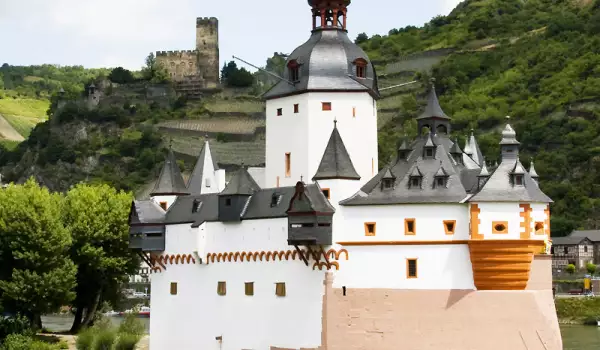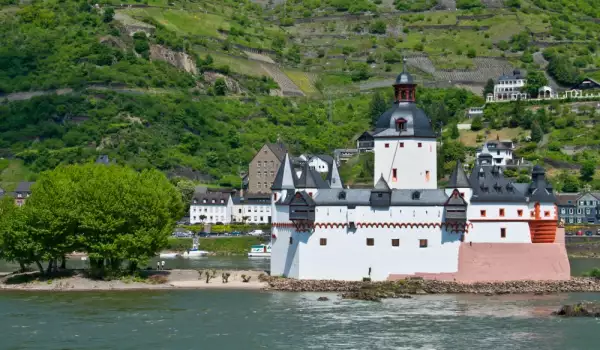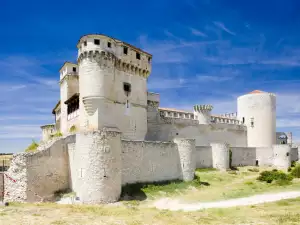Pfalzgrafenstein Castle

The amazing Pfalzgrafenstein Castle was built so that it resembles a ship. It is located in the Rhine river and along it, which is near the German city of Kaub. Pfalzgrafenstein Castle is a medieval fortress that is the Falkenau island, known simply as the Palatinate.
The history of the Pfalzgrafenstein Castle began in the 14th century, when King Ludwig Bavarian decided to erect a fortress there, which controlled the right side of the Rhine. The foundations of the castle were made in 1326 to 1327 and the hexagonal firewall that gives the impression that the complex resembles a ship that is on the high tower was built between 1338-1340. It reaches a height of 12 meters, as there are two floors with corridors and galleries.
Ludwig Bavarian plan to build the castle was cunning as the main aim was to take money and charges of goods carried by ships on Rhine. In 1477 the fortress island Falkenau passed into the hands of Count of Katzenelnbogen.
The structure was improved twice after that - once in 1607 and again in 1755. In those works were erected turrets, arms and upper bastion of the main tower, which was covered with a typical baroque metal hat.
By the time Pfalzgrafenstein Castle functioned as a fortressand started to charge fees, it was not uncommon along the river.

The system of collecting fees was not at all kind. In the river there stretched chains that did not allow the ship to pass, if not given the appropriate amount. Pfalzgrafenstein Castle in nature was something like a perfect military fortress.
Since 1946 the castle became the property of the local province of the Rhineland-Palatinate. Since then the fortress-ship was open for public visits. There visitors can with full force feel the atmosphere of the 14th century – in the museum exhibitions of Pfalzgrafenstein Castle there is no electricity and no toilet.
The idea that tourists gain is more than realistic. The castle can be considered interesting with authentic artifacts of copper and pottery, dating from the 17th to the 19th century.















